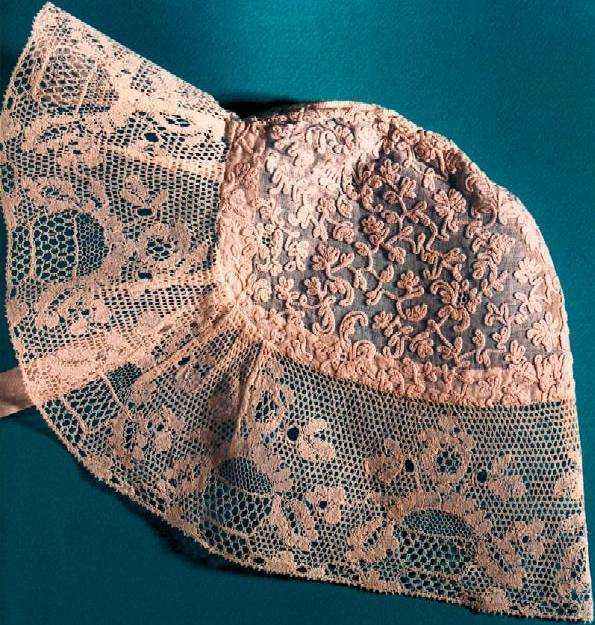Association Pouientes D'Oc |
||
| Back to Lace in Italy | ||
|
Some 15 valleys in the Alpine region, among Cuneo, Turin and Imperia, still use a very old language, the so calle lingua d'oc. In Varaita Valley (in central position of this area) and Val Maira, like in the near Queyras (France), we can find bobbin lace since the second half of XVIIth century. The main features of
this lace are the ground, always in Point de Paris and the
designs, usually inspired to nature (flowers, bees, etc.) but also
geometric, in whole stitch with the use of a gimp. Other stitches (point
ŗ la rose, half stitch, point cannage, point d'esprit)
can be often found in this lace. Traditionally the execution required no design. Lace was used to adorn traditional feminine dresses, in particular for cuffs. Some lace were used also for Casteldelfino male customs and for dresses to be worn in the festivity Bažo di Sampeyre. There is notice of very few altar table clothes. In 1920s lace was used also for feminine underwear and table clothes. Nowadays they are often used in many ways. The decline in the use of cuffs involved also the decline of lace production. In the late 1920s colonel Michele Celestino Bes (1872-1953), commander of Cuneo 2nd Alpine Regiment organised lace courses for about two years. By these courses a great lacemaker, Dondo Talino (Maria Caterina Richard, 1863-1941) cuold learn the art to some 15 women. One of them, Teto di Piasso (Margherita Estienne, 1910-1994) taught lace art to Mr. Gianpiero Boschero (Jan Peire de Bousqužer), lawyer. The recovery of a copy of Bellino lace school catalogue allowed to pass from simple to more complex laces. In 1987-1988, with the support of Cuneo Museum, Mr. Boschero, almost last heir of lace tradition (lacemakers were very old or dead) held a first lace course, introducing the use of technical designs: a great help to lacemakers. Later, in 1988, the Association Pouientes D'Oc (Occitan laces) was founded with the aim of studing and teaching traditional bobbin lace. Since 1998-1999 bobbin lace is taught in some Cuneo primary schools.
|
 |
|